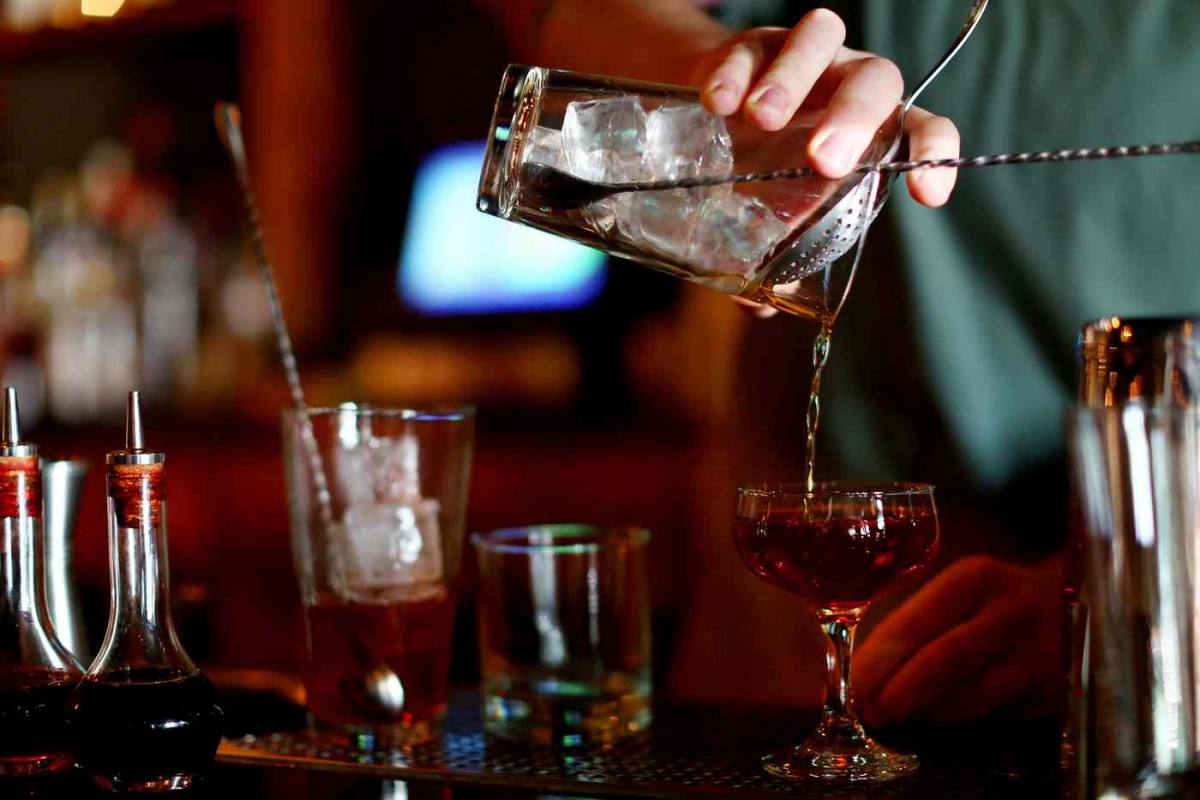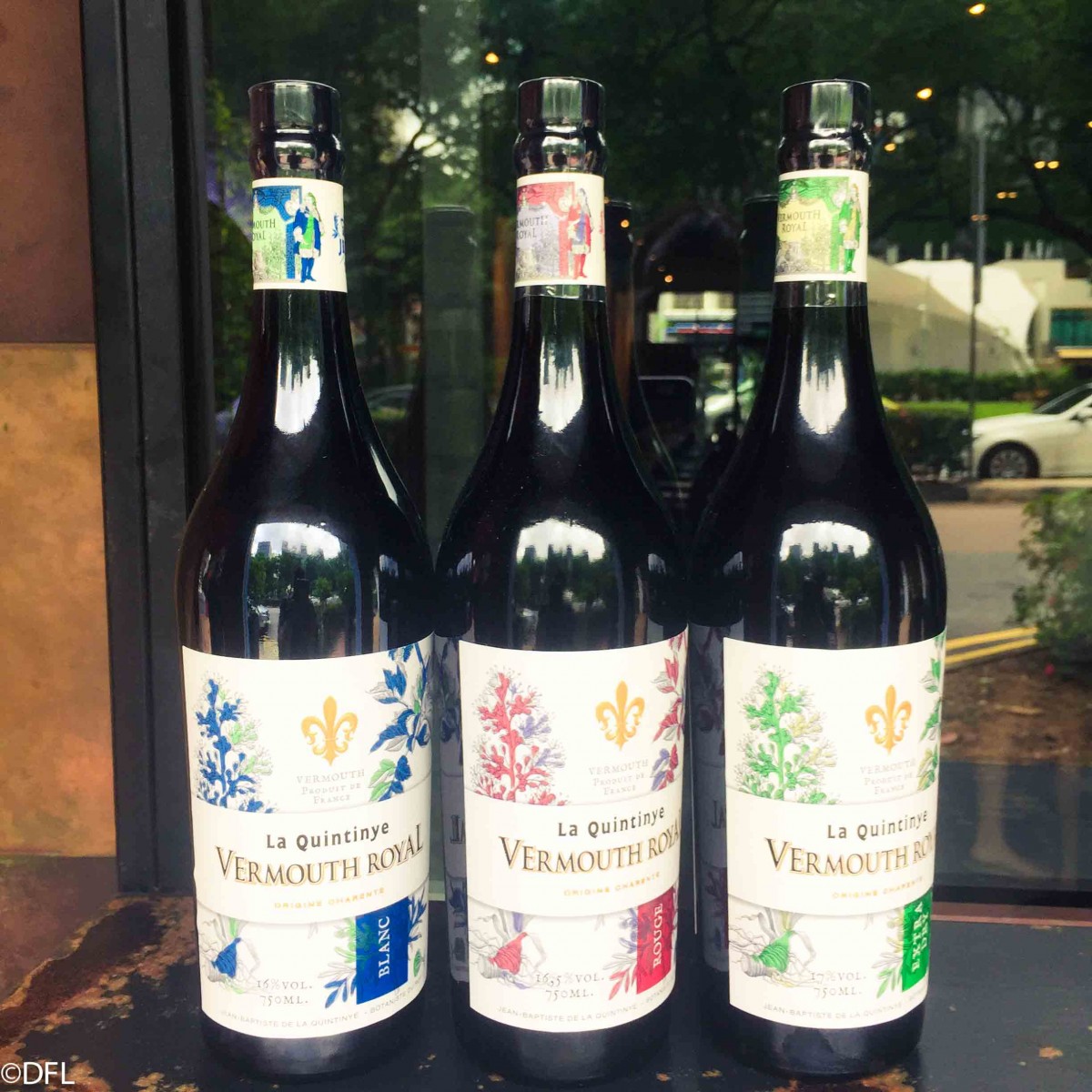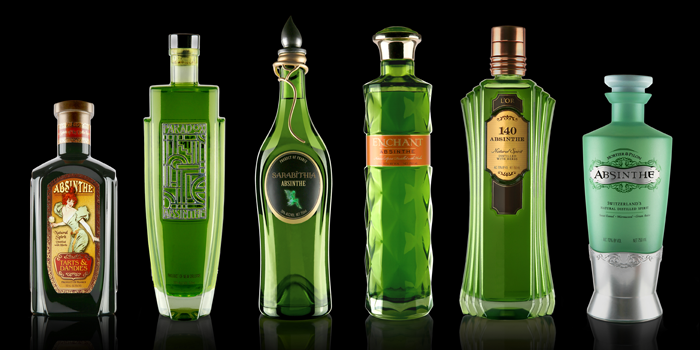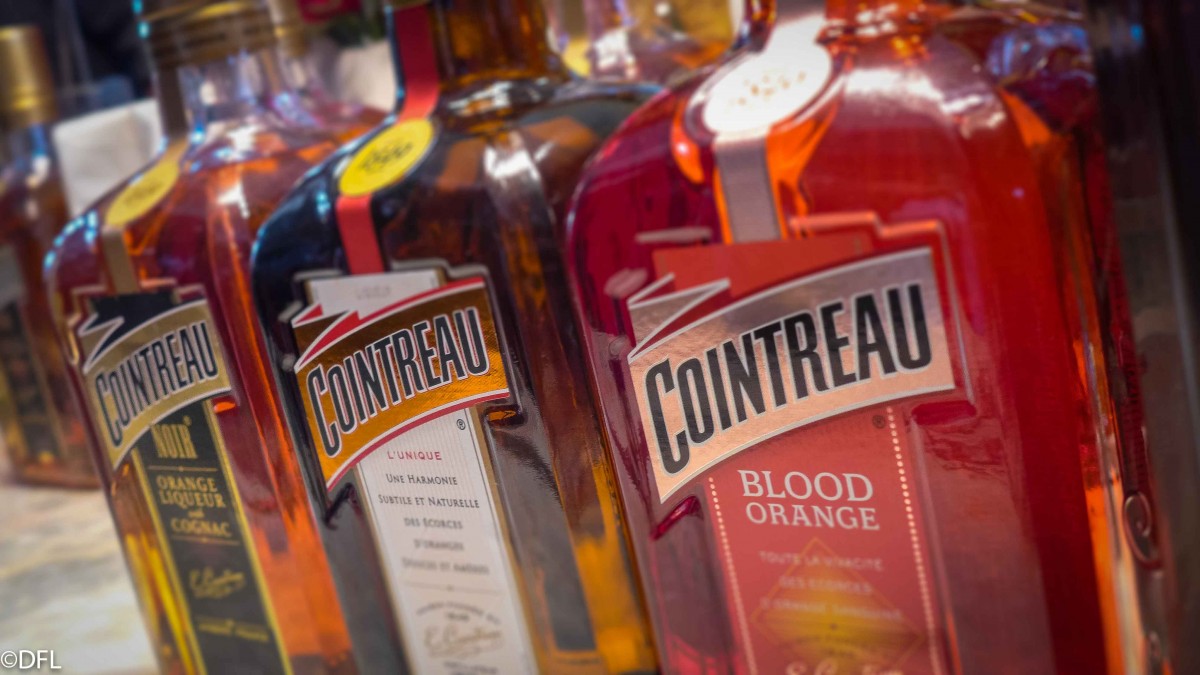
#496
5 BOTTLES YOUR HOME BAR CAN'T DO WITHOUT
17 May 2017 By David Fuhrmann-Lim
These ingredients aren’t usually seen at home – but their presence opens up a realm of cocktail possibilities. Here are five bottles your liquor cabinet can’t do without.
By Chad Parkhill
Every working bartender will be familiar with this scenario: you go to visit friends or family on one of your nights off, and someone suggests that you whip up a round of mixed drinks for everyone. “What can you make with this?” they ask, gesturing to a liquor cabinet that contains a bottle of gin, a bottle of white rum, a bottle of vodka, a bottle of tequila, and maybe a bottle of Baileys. Your heart sinks – the answer is, well, “Not much.”
Professional cocktail bartenders don’t just work with the well-known “base spirits” that you can find in any liquor store. They also work with a host of more recondite ingredients known in industry lingo as “modifiers”, which enable the alchemical transformation of the base metals of those popular spirits into the gold of a balanced cocktail. Some of these ingredients are poured liberally, while others are applied only in judicious little splashes and dashes – but asking someone to make a cocktail without them is like asking a chef to turn a raw steak into a meal with only a frypan.
1. Bitters
There’s an old saying about bitters: that they are to cocktails as salt and pepper are to cooking. In fact, the first known print definition of the term “cocktail”, from 1806 (“a stimulating liquor, composed of spirits of any kind, sugar, water, and bitters – it is vulgarly called bittered sling”) has made bitters the sine qua non of the cocktail. Some tedious bores even insist that if there are no bitters in a mixed drink, it has no business calling itself a cocktail. While I personally wouldn’t go that far, I think it’s fair to say that bitters are the first ingredient you should buy if you want to make cocktails at home.
Realistically, you need only three different types of bitters to make the vast majority of cocktails: an aromatic bitters (the aforementioned Angostura, or one of their competitors such as The Bitter Truth’s Old Time Aromatic Bitters or Adam Elmegirab’s Orinoco Bitters), an orange bitters (such as the one made by Angostura, or Gary Regan’s Orange Bitters no. 6), and a Creole bitters (a sub-genre of aromatic bitters formerly restricted to one brand, Peychaud’s, competing versions of which are now made by a number of smaller producers). Once you have these three types of bitters, you can make a huge number of different classic cocktails at home: old-fashioneds, martinis, Manhattans, sazeracs …
Most cocktails only call for tiny dashes of bitters, but a few recipes call for serious quantities of them. The most successful of these recipes is New York-based bartender Giuseppe Gonzalez’s Trinidad sour, which uses Angostura bitters not as a modifier but as the drink’s base spirit. It’s a crazy idea for a drink, but one that counterintuitively works.
Make it at home: Trinidad sour
30 ml Angostura bitters
30 ml orgeat
22.5 ml lemon juice
15 ml high-proof rye whiskey
To measure the Angostura, pop the plastic dasher top off your bottle with a butter knife and pour the bitters into a jigger as you would any other spirit. Build all ingredients in a shaker. Add ice and shake to chill. Double strain into a chilled cocktail coupe and serve without a garnish.
Take care while making and drinking this cocktail – both the bitters and the cocktail itself will permanently stain just about anything they come into contact with.
Pair with a film: Vincent Sherman’s 1952 film Affair in Trinidad is a cheesy little slice of noir, most notable for being Rita Hayworth’s comeback film after a four-year hiatus from acting.
 2. Vermouth
2. Vermouth
Alas, vermouth’s reign behind the bar was ended by the one-two punch of prohibition and the second world war (which entangled both Italy and France, vermouth’s home territories) – and aside from the aforementioned Manhattans and martinis, vermouth-based drinks were very much out of favour throughout the late twentieth century. Thanks to the resurgence of interest in classic cocktails and pre-prohibition drinking culture, though, you can now find high-quality vermouth nearly anywhere you’d care to look.
For the home bar, you’ll really only need two different types of vermouth – a sweet red one (also known as an Italian or rosso vermouth) and a dry white one (also known as a French vermouth). If you acquire a taste for the stuff, you might want to supplement these two bottles with a sweet white one (also known as a blanc or bianco vermouth). Thus armed, you’ll be ready to enjoy any number of classic cocktails – not just the Manhattan and martini, but also the Negroni, the martinez, the turf club, the Rob Roy, the boulevardier, the old pal … and this, the Adonis, an elegantly simple and delicious low-ABV aperitif cocktail.
Make it at home: Adonis
45 ml sweet vermouth
Two dashes orange bitters
Build all ingredients in a mixing glass. Add ice and stir to chill. Strain into a chilled cocktail coupe and garnish with a twist of orange peel.
Pair with a song: The Magnetic Fields’ I Don’t Want To Get Over You suggests that drinking vermouth – alongside dressing in black, reading Camus, and smoking clove cigarettes – might be a good way to get over a breakup. Your mileage may vary.
3. Absinthe
No other category of spirit has suffered as much as absinthe has over the years. After rapidly gaining popularity in late 19th century France – as a replacement for wine and brandy made scarce by the scourge of phylloxera – it was the subject of a full-blown moral panic fomented by both vintners (who resented its newfound popularity) and the temperance movement. The 1905 Lanfray affair – in which French labourer Jean Lanfray killed his pregnant wife and two children while under the influence of absinthe – provided the pretext for strict government controls over absinthe, and a global wave of absinthe bans followed.

The fact that absinthe was illegal in many parts of the world throughout most of the 20th century gave it an illicit countercultural cred – those alive in 2001 might remember the micro-scandal when Kylie Minogue made a cameo as la fée verte, the personification of absinthe, in Baz Luhrmann’s Moulin Rouge. That (now quite daggy) cred didn’t help much though, as countries around the world overturned their absinthe bans in the face of new evidence that absinthe was only as harmful as any other high-ABV spirit. Cheap and nasty Czech-style “absinthes” flooded the market, leaving most consumers with the impression that absinthe is a gimmicky drink – something to be consumed as a shot, or set on fire.
Taste a proper Swiss or French-style absinthe, though, and you’ll find a drink that’s complex, herbaceous, and surprisingly mellow for something with such high ABV. You’ll also see why American bartenders of the 1860s and 70s, having heard rumbles about the drink’s popularity on the continent, began putting a little dash of “the green stuff” into just about everything they mixed, where its strong anise and bitter wormwood notes would perform the same role as aromatic bitters.
As such, a little Japanese-style dasher bottle filled with absinthe is one of those tools that you might initially think is a little superfluous, but that you will shortly come to regard as indispensable for your home bar. And one of the best cocktails to showcase absinthe’s indispensability is the corpse reviver no. 2, a delightfully sharp concoction designed to cure hangovers. Just remember that, in the words of The Savoy Cocktail Book, “Four of these taken in swift succession will unrevive the corpse again.”
Make it at home: Corpse Reviver no. 2
22.5 ml gin
22.5 ml Cocchi Americano, Lillet Blanc, or other white quinquina
22.5 ml orange liqueur (Cointreau, Pierre Ferrand dry curaçao, or similar)
22.5 ml lemon juice
Two small dashes absinthe
Build all ingredients in a shaker. Add ice and shake to chill. Double strain into a chilled cocktail coupe and garnish with a twist of lemon peel.
Pair with a story: Poppy Z Brite’s His Mouth Will Taste of Wormwood – the constant references to absinthe in Brite’s transgressive and sexually explicit horror writing gave the spirit much of its countercultural cachet in the 1990s.

4. Maraschino
While absinthe is one of the most misunderstood and long-suffering spirits categories, at least it has brand recognition. The same can’t really be said for maraschino, a clear cherry-based – but not really cherry-flavoured – liqueur from Dalmatia that’s practically unknown outside of bartending circles. It’s common to see a little caveat applied to recipes that call for maraschino to remind readers that maraschino liqueur is not the same thing as the syrup that maraschino cherries come in. It’s even more often mispronounced than not – the “sch” is a hard “sk” sound, so it’s mara-skee-no, not mara-sheen-o.
Maraschino is made from marasca cherries, which themselves come from the Dalmatia region of what is now Croatia – and both the cherries and the Dalmatia region have caused a few complications for the liqueur and its originators, the Italian Luxardo family. Maraschino cherries used to be marasca cherries brined in ocean water and preserved in maraschino liqueur, but they’re now, for the most part, neon-red, syrupy-sweet franken-fruit that have been leached of their natural colour and flavour by calcium-laden brines. (A few brands, most notably Luxardo, make non-alcoholic versions of maraschino cherries that cleave closely to the original template.) The second world war also threw a spanner in the works, as the allies bombed the original Luxardo maraschino factory in Italian-held Zara (now Zadar, Croatia), then Tito’s partisans swept in to secure the city for Yugoslavia. All of which meant that, until relatively recently, it was often quite difficult to acquire maraschino liqueur. There are a few competing brands of note – including the Croatian Maraska, still made in Zadar – but I’m a firm believer that the original, in this case, is still the best.
As the liqueur has such a powerful and funky flavour, it tends to overwhelm drinks if poured liberally – I tend to avoid putting more than a quarter-ounce (7.5 ml) in any given drink, unless there’s a very good reason to do so. But once you master the precision required to wield this ingredient well, you’ll soon discover that it has many uses in the bar – not least of which is adding the signature je ne sais quoi to the classic Hemingway daiquiri.
Make it at home: Hemingway daiquiri
This recipe is in fact not what Hemingway himself drank. His preferred recipe was really Constantino Ribalaigua Vert’s Daiquiri no. 4, just with double the rum and no sugar – an unbalanced mess. (Whatever you think about his prose, Hemingway made a better writer than he did a mixologist.) The following is my own recipe that takes inspiration from Ribalaigua Vert’s Daiquiris no. 3 and no. 4, but rebalances the drink so it can be served up in a coupe instead of over crushed ice. If you want a stiffer drink, feel free to bump the rum up to 60 ml.
45 ml white rum
15 ml lime juice
15 ml pink grapefruit juice (unsweetened)
7.5 ml maraschino liqueur (preferably Luxardo)
5 ml (one bar spoon) simple syrup
Build all ingredients in a shaker. Add ice and shake to chill. Double strain into a chilled cocktail coupe and either garnish with an authentic maraschino cherry, or leave as unadorned as Hemingway’s prose style.
Pair with a book: Philip Greene’s book To Have and Have Another goes into a ludicrous amount of detail about Hemingway’s drinking habits and the drinks that appeared in his writing.
5. Orange liqueur
Of all of the useful modifiers to have in your cocktail cabinet at home, this is the one most likely to be there already – after all, lots of us love a cheeky dram of Cointreau, or keep some Grand Marnier around for cooking. This is great news for the beginner cocktail maker – orange liqueurs of one sort or another turn up in all sorts of classic cocktails, from the indefatigable margarita through to the stately sidecar and the exotic Pegu Club.

The white lady is one of those cocktails that are infrequently found on cocktail menus in the wild – probably because it’s one of those drinks that are rarely ordered by customers, and one that bartenders generally think of as a bit of old hat. It is, however, a model of elegance and simplicity, and a cocktail that can be made with commonly found ingredients.
One quick note – depending on the acidity of your lemons and the sweetness of your orange liqueur, you might need to bump up the sweetness of the drink by adding a touch of simple syrup, which you can make by mixing equal parts (by volume) of caster sugar and hot water and stirring until the sugar dissolves.
45 ml gin
22.5 ml orange liqueur
22.5 ml lemon juice
One egg white
Build all ingredients in a shaker. Shake without ice to fluff up the egg white, then add ice and shake to chill. Taste the cocktail, and add a dash of simple syrup if necessary. Double strain the completed drink into a chilled cocktail coupe and garnish with a twist of lemon peel.
Pair with a movie: What else but the BBC’s 1997 adaptation of Wilkie Collins’s The Woman in White?
Read it at Guardian Life and Style
Like this? Here’s the full Cointreau story

You might be interested in...
DRINK THIS (QUICK): HENDRICK'S ABSINTHE
Is The Green Fairy About To Go Mainstream?
GETTING CRÊPE-D OUT
Ouah! Travel Restrictions To France Have Finally Eased. But For Those Of Us Who Still Can't Travel, You Can Still Enjoy A Parisien Afternoon At French Fold.
YOUR GLASS IS GRASS
Proof & Co's Green ecoSpirits Initiative Lets You Save the Planet—One Cocktail at a Time. Here's How.
DRINK THIS (QUICK): HENDRICK'S ABSINTHE
GETTING CRÊPE-D OUT
YOUR GLASS IS GRASS